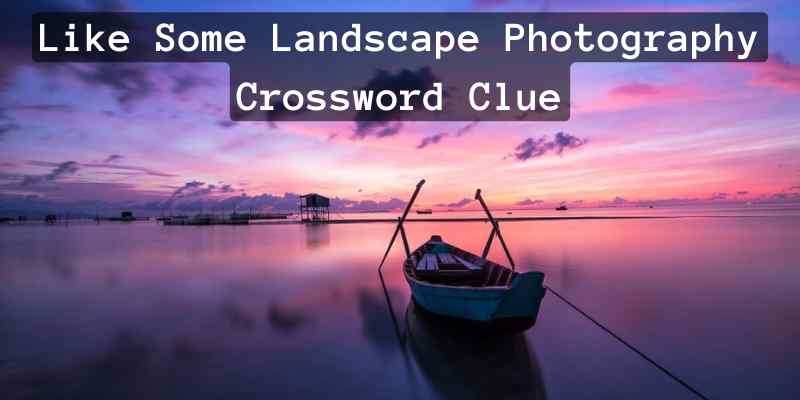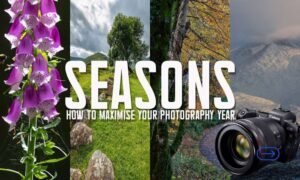Landscape images are a visual storytelling medium that captures the breathtaking beauty of nature. Like some landscape photography, whether rugged mountain ranges, tranquil forests, or cascading waterfalls, every scene tells a unique story. Unlike portrait or product photography, panorama pictures focus on the surroundings’ grandeur, aiming to awaken awe and appreciation for the world around us.
If you’re trying to find a Minot photographer in North Dakota, this guide offers insights into mastering the art of panorama images, protecting their origins, crucial techniques, and hints for accomplishing beautiful pictures.

What is Landscape Photography?
At its center, landscape pictures are set celebrating nature’s beauty. It’s more than just taking pix of scenery; it’s about capturing the essence of a place and the emotions it conjures up. The scope of this style is tremendous, starting from majestic mountains and serene beaches to dynamic cityscapes and mysterious deserts. Each photograph acts as a window right into a second, preserved forever.
For aspiring photographers, information on the sorts of panorama pictures can manual their creative adventure. Popular categories encompass:
- Urban Landscapes: Capturing cityscapes and architecture.
- Seascapes: Focusing on oceans, beaches, and waves.
- Nightscapes: Featuring starry skies and celestial phenomena.
Each type comes with unique challenges, but all share a common goal: to showcase the grandeur of the world.
The Origins of Landscape Photography
The roots of landscape photography trace lower back to the nineteenth century. Pioneers like Ansel Adams and Carleton Watkins used large-format cameras to document untouched landscapes. Their paintings in locations like Yosemite National Park now not handiest popularized the genre but also stimulated efforts in the direction of environmental conservation.
Adams, as an example, became famous for his capacity to capture dramatic contrasts and textures, the use of mild and shadow to convey landscapes to life. His techniques, which include the Zone System for perfect exposure, continue to steer photographers nowadays.
Early landscape photographers often faced technical challenges, from wearing heavy devices to navigating far-flung locations. However, their perseverance laid the basis for the dynamic subject of nature photography we recognize these days.
Essential Tools for Landscape Photography
To reach landscape photography, having the right device is important. Here’s what each photographer wishes:
- Camera: A DSLR or mirrorless camera offers versatility and high image quality.
- Lenses:
- Wide-attitude lenses for sweeping vistas.
- Telephoto lenses for isolating distant info.
- Tripod: Crucial for stability, especially in low-light conditions or long exposures.
- Filters:
- Polarizing filters reduce glare and decorate the sky’s color.
- ND filters permit creative effects like silky water or movement blur.
- Backpack and Weather Protection: Ensure your equipment remains safe in the course of outside shoots.
Investing in the proper equipment guarantees you’re prepared for numerous scenarios, from sunny days to stormy skies.
The Importance of Composition
Mastering composition is critical for developing compelling photographs. Good composition guarantees that each detail of your body contributes to the general tale. Here are key techniques:
- Rule of Thirds: Divide your body right into a 3×3 grid and place your subject alongside those balance lines.
- Leading Lines: Use paths, rivers, or fences to guide the viewer’s eye into the scene.
- Foreground Interest: Incorporate gadgets like rocks, vegetation, or timber to add depth and size.
- Symmetry and Reflections: Utilize reflective surfaces like lakes for balanced compositions.
Experimenting with these techniques can transform ordinary scenes into extraordinary works of art.
The Role of Light in Landscape Photography
Light is the essence of photography, and in panorama pictures, it performs an excellent greater critical position. The great, route, and depth of mild determine the temper of your image.
- Golden Hour: The soft, heat light just after sunrise or before sundown creates a magical environment.
- Blue Hour: The twilight length offers cool tones and a serene atmosphere.
- Midday Challenges: Harsh sunlight can motivate excessive evaluation, however using filters or searching for color can help.
Learning to adapt to different lighting conditions is a hallmark of skilled photographers.
Finding the Perfect Location
Scouting locations is a thrilling yet hard part of nature pictures. Tools like Google Earth and image apps will let you discover promising spots, but nothing beats firsthand exploration.
While famous locations like Yellowstone or the Grand Canyon are iconic, hidden gemstones regularly provide unique opportunities. Look for spots that resonate with you emotionally and visually.
Weather: A Photographer’s Friend and Foe
Weather conditions can make or damage a shoot. While sunny days are predictable, storms, fog, or snow can upload drama for your photos. Always check forecasts and be organized with:
- Waterproof Bags: To defend your tools.
- Weather-Sealed Equipment: For reliability in tough situations.
- Patience: Sometimes anticipating a destroy within the weather results in the maximum beautiful effects.
The Magic of Post-Processing
In the virtual age, enhancing is a critical part of images. Software like Adobe Lightroom and Photoshop allows photographers to beautify colors, regulate publicity, and accurate imperfections.
Key techniques consist of:
- Adjusting White Balance: To replicate the scene’s proper colorations.
- Boosting Contrast: To make textures pop.
- Selective Editing: Enhancing unique regions without overdoing it.
Remember, the intention is to complement the scene’s herbal beauty, and no longer overpower it with heavy manipulation.
Sharing Your Work
Thanks to social media, sharing your photography is less difficult than ever. Platforms like Instagram, 500px, and Flickr will let you connect with other fanatics and showcase your portfolio. Participating in online challenges or joining local photography corporations can also help you gain popularity.
For photographers looking to market their offerings, like a Minot photographer in North Dakota, preserving an expert internet site is critical. A devoted site facilitates enticing clients and showcases your expertise in taking pictures of the location’s herbal beauty.
Tips for Aspiring Landscape Photographers
- Start Local: Practice by photographing nearby landscapes.
- Experiment: Try different angles, compositions, and lights.
- Learn Continuously: Stay up to date on traits and strategies.
- Invest in Education: Online tutorials and workshops can refine your competencies.
- Be Patient: Great photographs often require looking forward to the best second.
Conclusion
Landscape photography is a fulfilling art form that mixes technical information with an appreciation for nature. Like some landscape photography, expertise in the significance of mild and composition to overcoming climate-demanding situations, each step within the system contributes to creating awe-inspiring pictures.
For those captivated by photography, embarking on a landscape image adventure is like solving a crossword puzzle – every shot is a bit of the larger image, ready to be located. Like some landscape photography journeys, it combines passion, patience, and an eye for detail. Whether you’re a hobbyist or a professional, snatch your digicam, task into the wild, and seize the splendor of our global.
FAQs
What camera is best for landscape photography?
There are many excellent options, but a DSLR or mirrorless camera with interchangeable lenses is ideal for landscape photography.
How do I choose the right location for landscape photography?
Research online, consult with local photographers and explore various places to find the perfect spot that resonates with your vision.
Is post-processing necessary for landscape photography?
While it’s not mandatory, post-processing can enhance your images significantly. Learning basic editing skills can be beneficial.
What is the most challenging aspect of landscape photography?
Patience and unpredictable weather conditions can be challenging, but they often lead to the most rewarding shots.
Can I make a career out of landscape photography?
Yes, many photographers have turned their passion into a profession. Building a portfolio and networking are essential steps in this journey.








